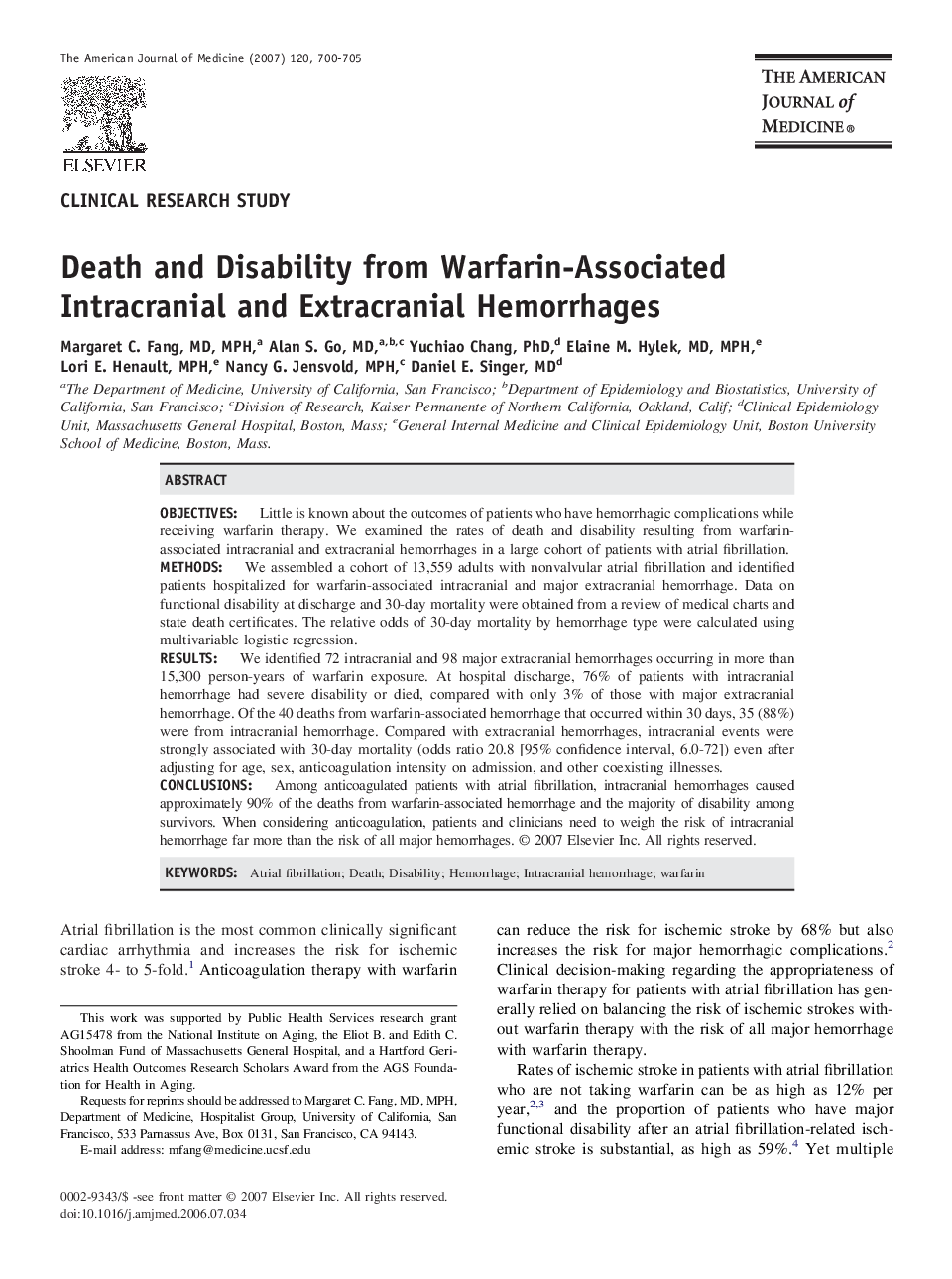| Article ID | Journal | Published Year | Pages | File Type |
|---|---|---|---|---|
| 2717598 | The American Journal of Medicine | 2007 | 6 Pages |
ObjectivesLittle is known about the outcomes of patients who have hemorrhagic complications while receiving warfarin therapy. We examined the rates of death and disability resulting from warfarin-associated intracranial and extracranial hemorrhages in a large cohort of patients with atrial fibrillation.MethodsWe assembled a cohort of 13,559 adults with nonvalvular atrial fibrillation and identified patients hospitalized for warfarin-associated intracranial and major extracranial hemorrhage. Data on functional disability at discharge and 30-day mortality were obtained from a review of medical charts and state death certificates. The relative odds of 30-day mortality by hemorrhage type were calculated using multivariable logistic regression.ResultsWe identified 72 intracranial and 98 major extracranial hemorrhages occurring in more than 15,300 person-years of warfarin exposure. At hospital discharge, 76% of patients with intracranial hemorrhage had severe disability or died, compared with only 3% of those with major extracranial hemorrhage. Of the 40 deaths from warfarin-associated hemorrhage that occurred within 30 days, 35 (88%) were from intracranial hemorrhage. Compared with extracranial hemorrhages, intracranial events were strongly associated with 30-day mortality (odds ratio 20.8 [95% confidence interval, 6.0-72]) even after adjusting for age, sex, anticoagulation intensity on admission, and other coexisting illnesses.ConclusionsAmong anticoagulated patients with atrial fibrillation, intracranial hemorrhages caused approximately 90% of the deaths from warfarin-associated hemorrhage and the majority of disability among survivors. When considering anticoagulation, patients and clinicians need to weigh the risk of intracranial hemorrhage far more than the risk of all major hemorrhages.
